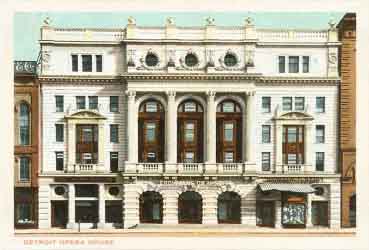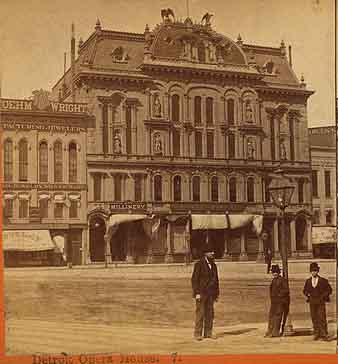Detroit Opera House
Campus Martius / Detroit, Michigan


Upon its opening, the Detroit Free Press proclaimed it a "luxurious temple of art." It was made of brick though covered with mastic to resemble cut stone. Much like City Hall -
which stood across Campus Martius from it - the Opera House had statues in niches. These represented Tragedy, Comedy, Music and so on. The interior the Opera House - including the
elaborate drop curtain - was decorated by Robert Hopkin. Garry Hough was the opening manager.


Over the years some changes occurred to the theater. The exterior underwent changes, such as extending window bays and removing statues. In 1885, the ground floor retail space was
converted into a smaller theater. J.L. Hudson has his first store in the Opera House before erecting his own building, designed by the same architect, one block north. During the
summer of 1896, the opera house exhibited several reels of film through an eidoloscope (an early motion picture system created in 1894, originally called the Panoptikon) including
a bullfight in Mexico.



